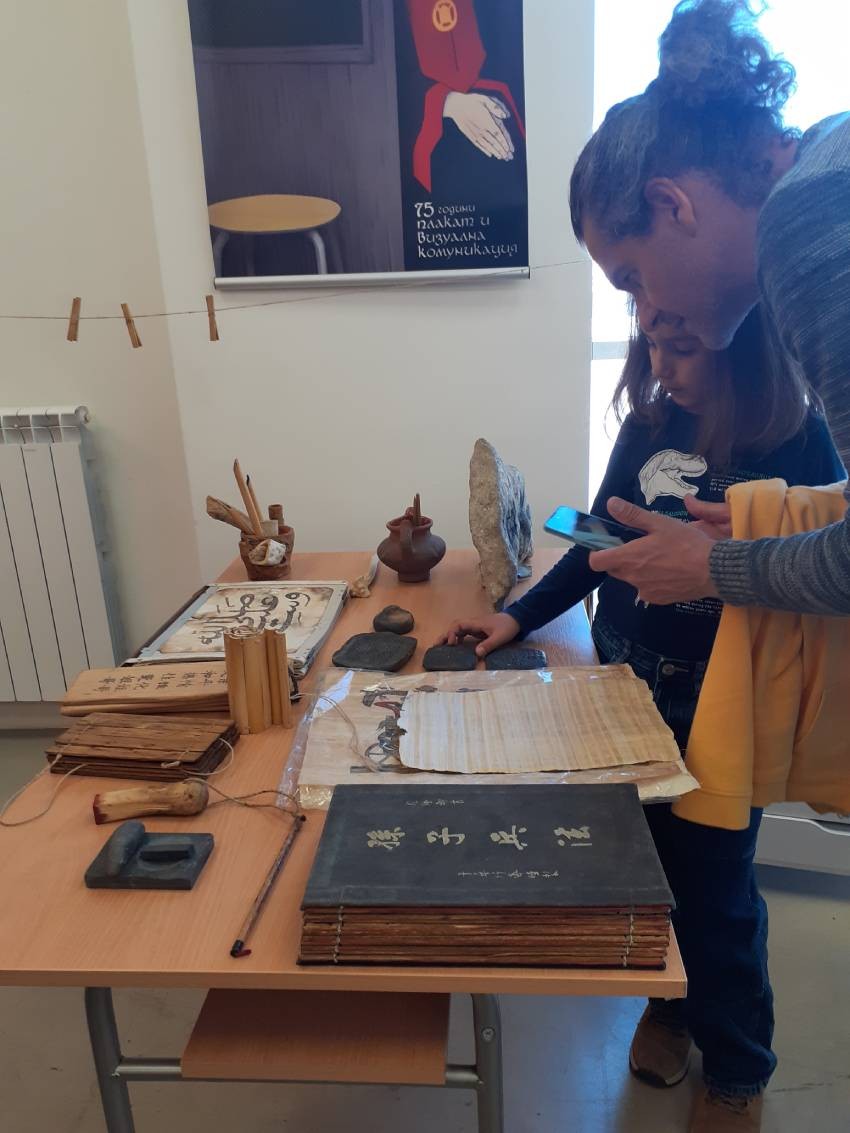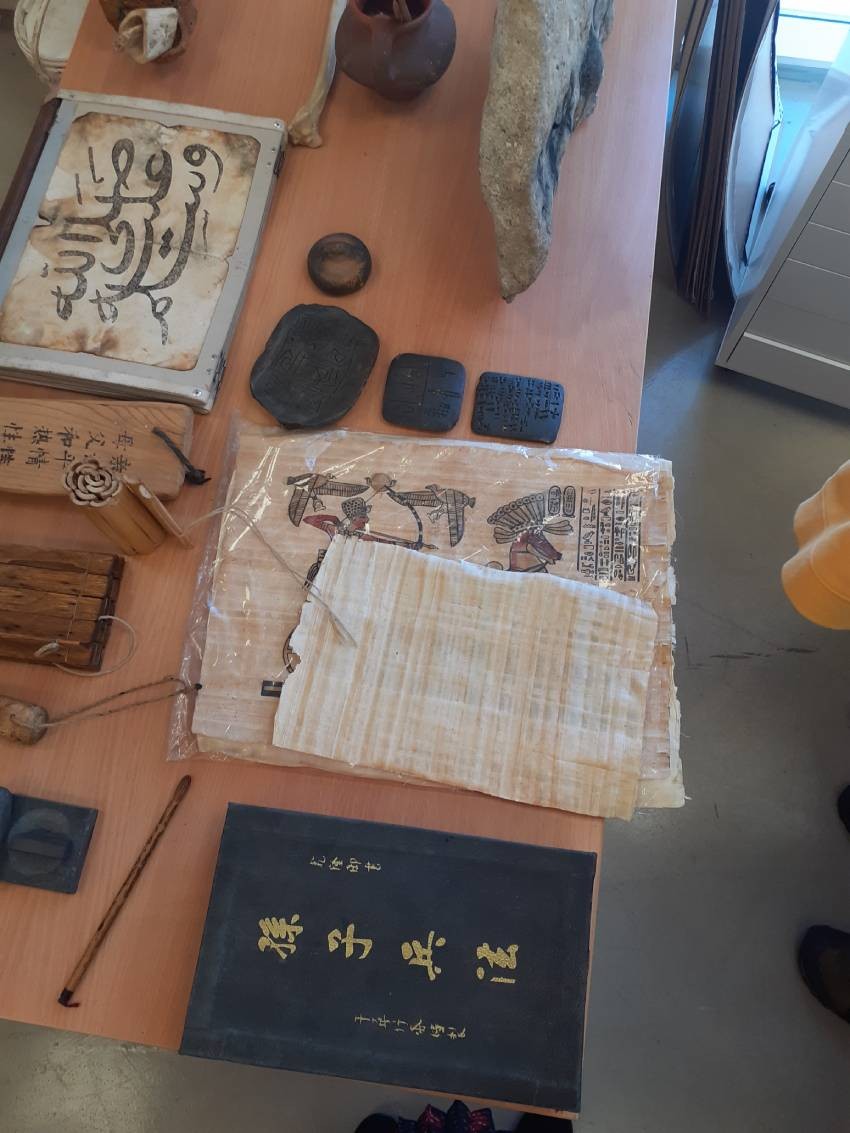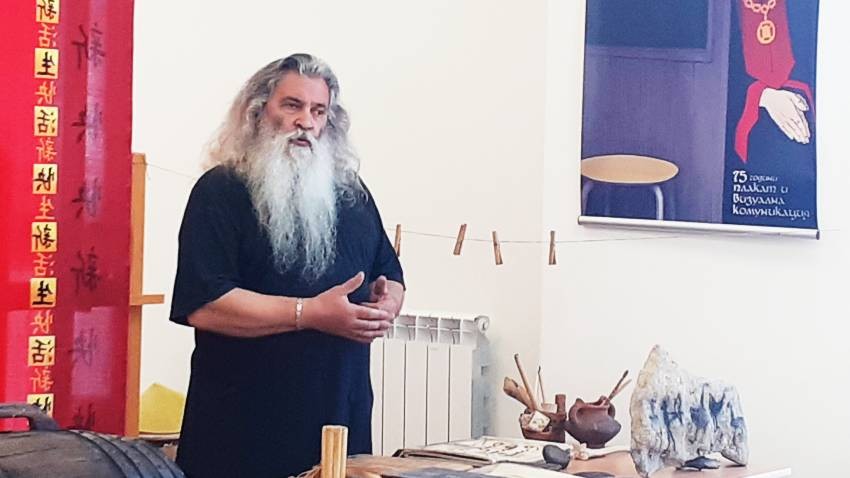
Are you still wondering whether "the mouse will eat the book," i.e., whether interest in books and their mission to carry wisdom through the ages will end one day. Well, the answer to that question is “Absolutely Not”." Books will never be replaced by any computer as long as there are true "knights of letters" among us. They know the history of letters and the ancient roots of writing. These people regard the act of writing letters as an art.

Artist Diyan Pavlov from the town of Pleven (Central North Bulgaria), known for his nickname Jimmy, has devoted his entire career to the preservation of human memory through characters and books. Without being a historian, an art historian, a museum curator or a teacher, Diyan Pavlov skillfully tells facts and details about the history of letters.
He has built a true temple of letters in his hometown- a creative workshop called “О'Pismenech”. It features real parchment papers, clay tiles, hieroglyphs, runes, Glagolitic signs and alphabets. There is even a wooden caddy filled with water in which anyone can try to make paper by hand. A functioning printing press is placed in the center of the Creative Arts Center. Everything is made of natural materials owing to Diyan Pavlov's efforts and skill.

In the beginning, he painted letters on advertising posters. He was engaged in this activity before 1989. "Now there is a multitide of fonts and plenty of information about them. The creative workshop "O'Pismenech has been attracting public attention over the past 8 or 9 years" - says the artist from Pleven:
“I do a one-man show that lasts two and a half hours. I tell a story, in a chronological order, about the emergence of writing, the means of writing, the ways and the materials used over the centuries, going through ancient China, Egypt, Hellas, Rome, the Middle Ages, etc. And we come to the turning point when goldsmith Johannes Gutenberg invented the movable-type printing press. I make live demonstrations on how printing began. I print a sample text using a replica of Gutenberg’s printing press I made myself. My workshop also features the making of a handmade paper under the method of the Chinese eunuch Cai Lun. In 105 AD, he discovered a method to make paper with natural materials."

The second part of the creative show called "The School" is about Khan Asparuh and his people who came to our lands and brought the proto-Bulgarian runic signs. However, the runes quickly faded during the attempts of the proto-Bulgarians to communicate with neighbouring countries and the administration of Khan Asparuh replaced them with Greek and Latin letters, says Diyan Pavlov:

"The story continues with the work of the Holy Brothers Cyril and Methodius - the Glagolitic script. The Cyrillic alphabet, which is the work of their disciples, left its mark not only in Bulgarian history, but also in European history. Saints Cyril and Methodius rejected the trilingualism. They introduced the use of the Old Church Slavonic during the church services in the Eastern Orthodox churches. The alphabet of the disciples of Cyril and Methodius (the Cyrillic alphabet), which we use to this day, is another merit. I believe that we should call it the Bulgarian alphabet. The spectacle continues with the "little book" Father Paisius wrote with much pain and love for the Bulgarian people. Then, we come to the other "Bulgarian bible"- the Fish Primer of Dr. Petar Beron. It became a manual for the establishment of the first Bulgarian secular school in the town of Gabrovo. On the eve of May 24, the Day of Slavonic Alphabet, Bulgarian Education and Culture, my workshop visits the town of Veliki Preslav, which was the capital of the first Bulgarian empire. I was invited to visit different towns and villages. I also received an invitation from the National Library. I have made a replica of Gutenberg's printing press which can be seen in the "History of the Book" hall in “St. St. Cyril and Methodius” National Library", said Diyan Pavlov.
English version: Kostadin AtanasovWith his exhibition "Redemption" in the "Sofia Press" gallery-bookstore in Sofia, containing paintings and sculptures, Ivaylo Kamenov calls for humility before the inevitability of the passing earthly path. He addresses the message..
A number of interesting events related to Bulgaria and Bulgarian culture will take place in Bratislava on October 11. “We hope that the information will be useful for everyone who would like to immerse themselves in Bulgarian culture and art this..
On 11 October, the Sofia Opera will present the first premiere of its new season: the hugely popular Cavalleria Rusticana by Pietro Mascagni and Pagliacci by Ruggero Leoncavallo. This production by Plamen Kartalov is a collaboration between three..
Sylvia Tomova, a star of the Bulgarian stage, received her training at the Vaganova State Ballet Academy in Saint Petersburg. Her career has been closely..
Canada-based Bulgarian artists Petar Boyadzhiev and Daniela Zekina will present their joint exhibition “AlterEgo” in Chicago on November 1 . Their new..

+359 2 9336 661
